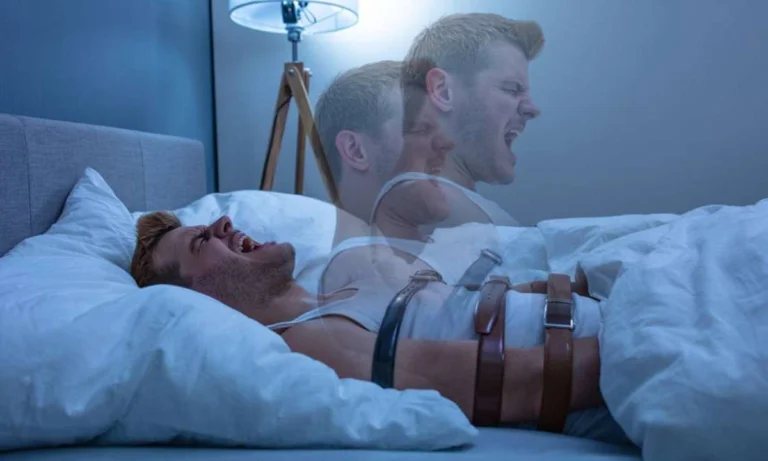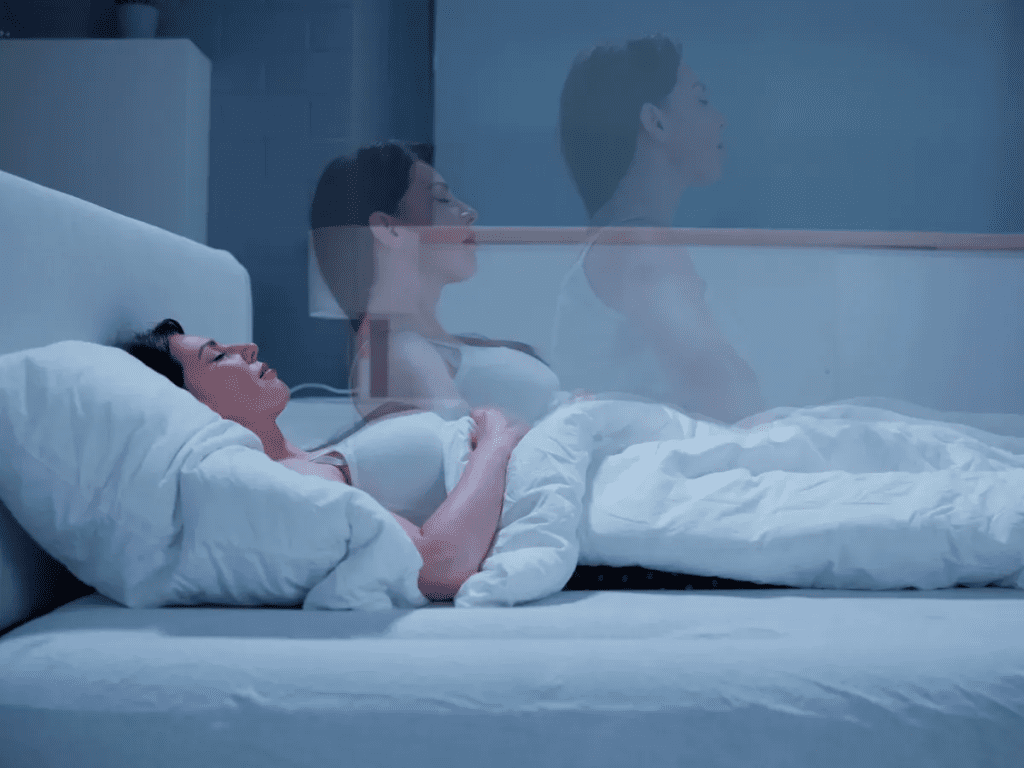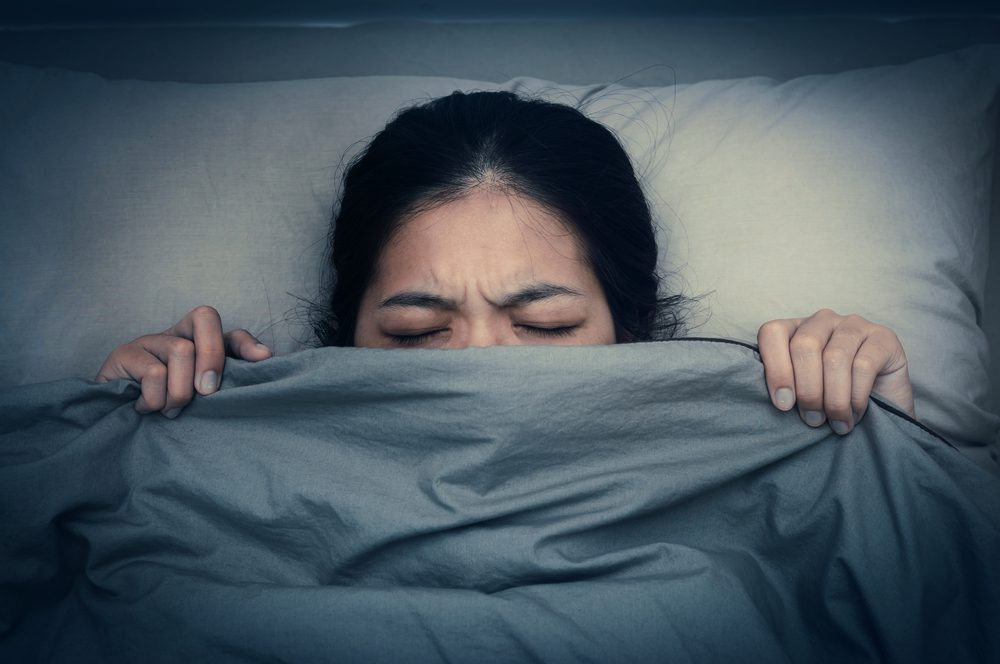Sleep paralysis is a unique experience where the mind is awake, but the body remains immobilized. This unsettling state often leaves people feeling vulnerable, confused, and even frightened. While it may seem like something out of a horror movie, sleep paralysis is a common occurrence, affecting many people at least once in their lives. Here, we’ll dive into what sleep paralysis is, why it happens, and what your body goes through during an episode.
What Is Sleep Paralysis? Understanding the Basics

Sleep paralysis is a phenomenon in which a person, despite being fully conscious, is unable to move or speak. This temporary paralysis occurs most commonly when one is transitioning between wakefulness and sleep, either just before falling asleep or immediately after waking up. During this time, the brain is awake, but the body remains in a sleep-induced state of paralysis, often causing feelings of fear or panic.
Despite the intense sensations, sleep paralysis doesn’t physically harm the body. It’s a natural part of the sleep cycle, specifically during rapid eye movement (REM) sleep, when the brain temporarily “paralyzes” the muscles to prevent us from acting out our dreams. This paralysis usually ends once we wake up, but in cases of sleep paralysis, this disconnection can linger for a few unsettling moments.
The Stages of Sleep Paralysis: Hypnagogic and Hypnopompic States
There are two main types of sleep paralysis episodes: hypnagogic (when falling asleep) and hypnopompic (when waking up). Each type occurs at different points in the sleep cycle and can produce unique sensations.
- Hypnagogic Sleep Paralysis: This occurs as you’re drifting into sleep. During this stage, your body naturally starts to relax and prepares for sleep. However, if your mind remains alert while your body becomes immobilized, you may feel trapped in a conscious yet paralyzed state. The sudden realization that you cannot move can lead to feelings of panic and helplessness.
- Hypnopompic Sleep Paralysis: This type happens as you wake up from REM sleep. In REM, your body is in a deep state of paralysis to keep you from physically acting out your dreams. Hypnopompic paralysis occurs when the brain wakes up too quickly, leaving you mentally aware but still unable to control your body. This creates a temporary but intense feeling of being “stuck” between sleep and wakefulness.
What Causes Sleep Paralysis? Exploring the Science Behind It
Although sleep paralysis is a natural occurrence, certain factors make people more susceptible to it. Scientists suggest that disruptions in sleep patterns and psychological stress are two of the most common triggers. Here’s a closer look at some known causes:
- Sleep Disruptions: Lack of sleep or irregular sleep schedules can increase the likelihood of experiencing sleep paralysis. When sleep patterns are erratic, the brain’s transition between sleep stages becomes irregular, which can trigger an episode.
- Mental Health Conditions: Anxiety, depression, and bipolar disorder have been linked to higher rates of sleep paralysis. Emotional stress and mental health struggles often interfere with regular sleep cycles, putting people at higher risk.
- Sleep Position: Studies indicate that sleeping on your back may increase the chances of sleep paralysis. This position can lead to restricted breathing, which might interfere with sleep cycles and promote a state of paralysis.
- Underlying Sleep Disorders: Conditions such as narcolepsy and sleep apnea are associated with sleep paralysis. Both conditions cause abnormal sleep patterns, making it easier for the brain to fall out of sync with the body during transitions between sleep stages.
- Certain Medications and Substance Use: Some medications, particularly those that affect the nervous system, can increase sleep paralysis risk. Additionally, substance abuse, including alcohol, nicotine, and caffeine, may disrupt sleep patterns and exacerbate the condition.
The Symptoms of Sleep Paralysis: What to Expect During an Episode

The most notable symptom of sleep paralysis is the inability to move or speak, typically lasting from a few seconds to a few minutes. Episodes can be frightening, with many people reporting a sensation of being “pinned down” or unable to breathe properly. Other symptoms may include:
- Hallucinations: Many people experience vivid hallucinations during sleep paralysis, often involving shadowy figures or strange sounds. These sensations are common and stem from the brain’s struggle to distinguish between dream-like states and reality.
- Pressure on the Chest: Some people feel intense pressure on their chest, often described as if someone is sitting on them. This feeling results from the body’s natural state of muscle relaxation in REM sleep but can create discomfort when one is mentally aware.
- Shortness of Breath: Although sleep paralysis doesn’t affect breathing, the sensation of immobility can create the illusion of difficulty breathing. This reaction is psychological but can be distressing during an episode.
Who Experiences Sleep Paralysis Most Frequently?
Sleep paralysis affects about 8% of the population regularly, with occurrences being higher in people with specific mental health conditions. Although anyone can experience sleep paralysis, those with certain sleep disorders, such as narcolepsy, are at higher risk. Additionally, younger adults and those experiencing high stress or sleep disruptions may encounter episodes more frequently.
For some, sleep paralysis is a rare occurrence, while others may experience it multiple times a week. Despite the unsettling sensations, sleep paralysis itself isn’t harmful, though it can feel disturbing, especially for first-time experiences.
Managing Sleep Paralysis: Preventative Tips and Treatment Options
Because sleep paralysis is not dangerous, treatment usually isn’t necessary unless it’s frequent or distressing. However, certain lifestyle adjustments can help reduce the likelihood of episodes:

- Establish a Consistent Sleep Schedule: Going to bed and waking up at the same time every day helps stabilize your sleep cycle, reducing disruptions that may trigger sleep paralysis.
- Limit Alcohol, Nicotine, and Caffeine: These substances can interfere with sleep quality, making you more prone to irregular sleep patterns and episodes of paralysis.
- Create a Relaxing Pre-Sleep Routine: Minimizing stress before bed can improve your sleep quality. Meditation, reading, and avoiding electronic devices before bed are effective ways to prepare for restful sleep.
- Consult a Sleep Specialist for Persistent Issues: If sleep paralysis is frequent or accompanied by other sleep disturbances, a sleep specialist may recommend further evaluation or treatment options, such as a referral to a mental health professional or a sleep study.
Understanding the Role of Relaxation During an Episode
If you do experience sleep paralysis, it’s essential to remain calm and remind yourself that it will pass. Sleep paralysis may feel unsettling, but it is temporary. The more you focus on staying relaxed and breathing steadily, the quicker the episode is likely to end.
Conclusion: Embracing the Mystery of Sleep Paralysis
While sleep paralysis can be a frightening experience, understanding the science behind it can provide reassurance. Episodes typically pass within seconds to minutes, leaving no lasting physical effects. By making simple adjustments to your sleep routine and reducing stress, you can lower the chances of encountering sleep paralysis. Remember, if you do experience an episode, staying calm and grounded can help you overcome the temporary but intense sensations of this fascinating and mysterious sleep phenomenon.


